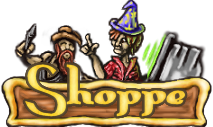https://archive.is/wip/VayEg
So Jacksonblu's guide to bypass Haven color conversion is great:
viewtopic.php?f=42&t=61438
However, dithering massively increases the amount linseed oil it costs to craft paintings. Making dithered images is often impossible without buying sketchbooks or having a bot to mass produce oil. In this thread, I'll show you how to make nice art you can actually craft.
You want to resize your image so it fits what you're trying to craft, convert the image to the Haven palette and then reduce the number of fields as much as you can to lower the linseed oil cost. For reference this is the Haven palette, aka the only colors compatible with Haven sketches:

If you're trying to convert an existing image, the first step is to resize it. For example, this is the template I've been using to make wallpapers:
If you're trying to make a wallpaper, your image should fit in the white area. Keep in mind different objects use different template sizes, so you might need to experiment to see what size works with what. To be honest I only have a template for wallpaper, for everything else I just play by ear and use the sketch preview function to check whether I'm doing things right. This page might help you find out what format is needed for certain objects: https://certainly-not-a-cat.github.io/hafen-uvs/
The second step is to convert the image to Haven's palette. To do this I typically open the image in gimp, turn up the contrast and convert the image from RGB mode to Indexed mode as detailed in JacksonBlu's guide except I keep dithering turned off. Alternatively sometimes I create a new palette with a handful of the image's original colors and use the bucket tool to recolor the areas.
The last step is to reduce the amount of fields and manually fix imperfections. Fields are the amount of connected colors. Here's an example:
Use your image editing tool of choice to connect colors and erase stray pixels. As an example, I have turned an image with three fields into an image with two fields with a single line of pixels at the bottom:
It's kind of like a combination of connect the dots and coloring a coloring book, it's pretty zen.
It is also possible to make part of your images transparent. Here's how to do it using gimp:
1. Open your image. Paint the area you want made transparent with a color you haven't used anywhere else.
2. click layer, click transparency, click add alpha channel
3. click select, click by color, select the area you want to make transparent
4. click color, click color to alpha, select the color of the area you want to make transparent again, click ok
And that's it. Now part of your image should be see through.
And that's how I convert images. It's usually not quick or easy, but it works. Protip: images that use a lot of beige or pale pink are particularly hard to convert because there's no similar colors in the Haven palette. For beige you'll need to manually add orange, yellow and white pixels. For brown you have to manually add black, red and orange pixels. For pale pink, you're out of luck. Your only option is to color the whole thing red and magenta. So, stay away from those colors unless you have a lot of patience.
Some other tips:
- Try to make the important lines at least three pixels wide. Thin lines don't show very well in H&H. The thicker the better.
- Lines that are one pixel wide can be used to connect colors in a way that won't show on the final result. This is good for lowering linseed oil cost.
-Bigger images give a crisper result.
To preview the finished result click the following link, upload your image and click view. This is really useful! Always check the preview before crafting your sketch, otherwise the end result might not be what you expect.
http://www.havenandhearth.com/portal/upload
Here's an example of stuff you can make using this technique. It's not as realistic as dithered images but at least you don't need to pay to make sketches like this.

If you're feeling lazy or would rather make something psychedelic, another option is to make blurry art. It's easy and takes almost no resources. The guide for it is here:
viewtopic.php?f=42&t=66600





